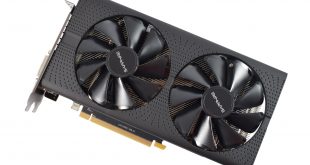
Having reviewed a couple of new AMD RX 500-series cards on launch day, we are supplementing those initial reviews with a look at Sapphire's RX 570 Pulse 4GB card. The Pulse series is a new addition to Sapphire's line-up, and essentially it is meant to offer the quality of Sapphire graphics cards at lower prices by ditching some of the extra, potentially superfluous features that the Nitro+ family include.
Personally I think this is very smart, as if Sapphire can deliver a strong graphics card that performs well and costs less than the competition, then it is surely onto a winner. In this review, we benchmark the Sapphire RX 570 Pulse 4GB against the competition in a number of the latest games and synthetic tests before offering our final verdict.
| GPU | AMD RX 480 | AMD RX 580 | AMD RX 470 | AMD RX 570 | AMD R9 390 |
Nvidia GTX 1050 Ti | Nvidia GTX 1060 |
| Streaming Multiprocessors / Compute Units |
36 | 36 | 32 | 32 | 40 | 6 | 10 |
| GPU Cores | 2304 | 2304 | 2048 | 2048 | 2560 | 768 | 1280 |
| Texture Units | 144 | 144 | 128 | 128 | 160 | 48 | 80 |
| ROPs | 32 | 32 | 32 | 32 | 64 | 32 | 48 |
| Base Clock | 1120 MHz | 1257 MHz | 926 MHz | 1168 MHz | Up to 1000MHz | 1290 MHz | 1506 MHz |
| GPU Boost Clock | 1266 MHz | 1340 MHz | 1206 MHz | 1244 MHz | Up to 1000MHz | 1392 MHz | 1708 MHz |
| Total Video memory | 4096 or 8192 MB | 4096 or 8192 MB | 4096 or 8192 MB | 4096 MB | 8192 MB | 4096 MB | 6144 MB |
| Memory Clock (Effective) |
1750 (7000) or 2000 (8000) MHz | 2000 (8000) MHz | 1650 (6600) MHz | 1750 (7000) MHz | 1500 (6000) MHz | 1752 (7008) MHz | 2002 (8008) MHz |
| Memory Bandwidth | 224 or 256 GB/s | 256 GB/s | 211 GB/s | 224 GB/s | 384 GB/s | 112 GB/s | 192 GB/s |
| Bus Width | 256-bit | 256-bit | 256-bit | 256-bit | 512-bit | 128-bit | 192-bit |
| Manufacturing Process | 14nm | 14nm | 14nm | 14nm | 28nm | 16nm | 16nm |
| TDP | 150 W | 185 W | 120 W | 150 W | 275 W | 75W | 120 W |
This Sapphire RX 570 does come with a slight factory overclock, at 1284 MHz (a 27 MHz increase over reference speeds).
It is also worth noting some of the features that the Pulse cards do not have. When compared to the Nitro+ series, features that are lacking include:
- Extra LED fans
- Dual-BIOS functionality
- RGB Sapphire logo
- NITRO Boost
- NITRO FanCheck
- NITRO CoolTech (NCT)
- Robust VRM cooling
Clearly, the Pulse cards are designed to ‘just work', so the performance of this RX 570 in games and benchmarks will go a long way to determining whether or not it is worth buying.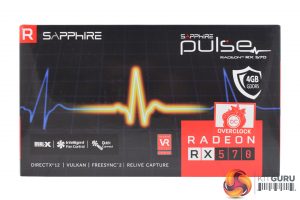
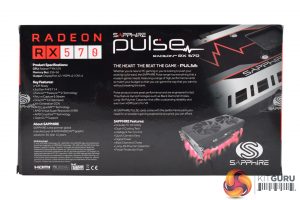
The Sapphire RX 570 Pulse ships in a dark box, with no product photo on the front. However, there is a EKG ‘pulse' graph which obviously ties into the series name.
On the back of the box, we get a list of the card's features as well as a first look at the product.
The bundle is fairly typical as there is a driver disk, a quick-start guide, product registration information and a small manufacturer card.
Moving on to the card itself, it certainly looks like other Sapphire cards we have seen recently – including the RX 580 Nitro+ Limited Edition. However, it is actually a bit smaller, measuring in at 230 x 125 x 40mm. Accordingly, this should fit in the vast majority of cases.
The card still uses a pair of 95mm fans, though, enclosed within a black plastic shroud. The shroud is also ‘dotted', something we have seen on other Sapphire cards as well.
The Sapphire logo is embossed onto the side of the plastic shroud, but it is definitely worth noting that this logo is not illuminated by LEDs – that is one of the cost-cutting measures Sapphire has taken to keep the Pulse cards a bit cheaper.
On the other side we can see two 6mm heatpipes above the PCIe connector but the rest of the cooling apparatus remains hidden.
Taking the card apart reveals the very modest cooling solution. Sapphire has used just 2x6mm heatpipes for the Pulse RX 570 card, while there is also a standard fin array and copper contact base. Small thermals pads are also in-place over the VRMs and VRAM chips.
Flipping the card over, we get another look at the Sapphire logo (the right way up this time) as well as a look at the backplate. It is definitely good to see a backplate included with this RX 570, as many manufacturers do not deem RX 570 cards worthy of a backplate – ASUS' Strix card, for instance, does not come with a backplate.
The backplate itself uses a silver, grey, black and red colour-scheme which I do think looks quite smart and snazzy. There is also more of the pulse styling here. However, I do wonder if this backplate design may limit the card's appeal, as it may well clash with a system's colour scheme. Something slightly less eye-catching (perhaps just black and white) would have ensured greater compatibility with other colour schemes.
At the end of the card we find a single 8-pin PCIe power connector, and Sapphire accordingly lists the card's power consumption as less than 180W.
At the end of the card we get a glimpse of the heat fins used to keep the core cool.
At the other end (or the front), the display outputs are as follows: 1x DVI, 2x HDMI and 2x DisplayPort.This test system is a bit different for us as we are actually using a Ryzen 7 test bed. This is for a number of reasons, but primarily we imagine many users will be considering pairing the new Ryzen processors with a new RX 500-series graphics card.
We are testing at 1080p and 1440p. We would usually include 4K results too, but for the sake of expediency we have omitted this resolution today. We also know that RX 570/580 cards are not aimed at the 4K gaming market so it is not a significant loss at all.
Test System Components
- Case: Game Max Sapphire RGB case (with 3 intake fans).
- Processor: Ryzen 7 1700 (overclocked to 3.9GHz).
- Memory: 16GB (4x4GB) PNY Anarchy 2800MHz DDR4 (operating at 2666MHz).
- Graphics Card: Variable.
- System Drive: Crucial M4 500GB SSD.
- CPU Cooler: Deepcool Captain 240 EX (pump at 12 volts, fan speed UEFI-limited to reduce noise).
- Power Supply: Seasonic PRIME Platinum 650W.
- Operating System: Windows 10 Pro 64-bit.
General Test System Notes
- AMD Graphics cards were benchmarked with the AMD (Crimson ReLive Edition) 17.4.4 driver.
- Nvidia Graphics cards were benchmarked with the Nvidia (GeForce Game Ready) 381.89 driver.
- The CPU cooler, the Deepcool Captain 240 EX, was set to a fixed low fan speed to further reduce the base noise level while the pump was left to operate at full speed since it produces no significant noise output.
- The CPU was overclocked to 3.9GHz using 1.4 Vcore.
- Each 3D benchmark or game is run 3 times at each resolution with an average result of the three runs taken as the final result for the graphs. Where benchmark screenshots are shown note these may not match the graphed figure since the graph represents the average of three while the screenshot is a single of those three values.
Comparison Graphics Cards List
- AMD RX 480 8GB (1266MHz core, 8000MHz memory)
- ASUS RX 570 STRIX Gaming OC 4GB (1300MHz core, 7000MHz memory)
- Nvidia GTX 1060 6GB Founders Edition (1506MHz core, 1708MHz boost, 8008MHz memory)
- Sapphire RX 580 Nitro+ Limited Edition 8GB (1450MHz core, 8000MHz memory)
- Sapphire RX 580 Pulse 8GB (1366MHz core, 7000MHz memory)
Software and Games List
- 3DMark
- Ashes of the Singularity
- Deus Ex: Mankind Divided
- Furmark
- GPU-Z
- Grand Theft Auto V
- Ghost Recon: Wildlands
- Sapphire Tri-XX
- Rise of the Tomb Raider
- Steam
- SteamVR Performance Test
- Unigine Heaven
3DMark is a showcase DirectX 11 benchmark designed for today’s high-performance gaming PCs. It is FutureMark’s most ambitious and technical benchmark ever, featuring real-time graphics rendered with detail and complexity far beyond what is found in other benchmarks and games today.
We run 3DMark Fire Strike (1080p) and Fire Strike Extreme (1440p).
In our first test, we can see that the Sapphire RX 570 Pulse and the ASUS Strix 570 cards are neck-and-neck. Both cards also perform similarly to the reference RX 480 which suggests the RX 570 cards do benefit from higher factory clock speeds.The SteamVR Performance Test measures a system’s rendering power using a 2-minute sequence from Valves Aperture Robot Repair VR demo. After collecting the data it determines whether a system is capable of running VR content at 90fps and whether VR content can tune the visual fidelity up to the recommended level. For machines that are not VR Ready the tool can help determine whether capabilities are bound by Graphics Card, CPU, or both.
In the SteamVR Performance Test, the Sapphire RX 570 Pulse is clearly VR-ready. It also performs very similarly to ASUS' Strix card.Unigine provides an interesting way to test hardware. It can be easily adapted to various projects due to its elaborated software design and flexible toolset. A lot of their customers claim that they have never seen such extremely-effective code, which is so easy to understand.
Heaven Benchmark is a DirectX 11 GPU benchmark based on advanced Unigine engine from Unigine Corp. It reveals the enchanting magic of floating islands with a tiny village hidden in the cloudy skies. Interactive mode provides emerging experience of exploring the intricate world of steampunk. Efficient and well-architected framework makes Unigine highly scalable:
- Multiple API (DirectX 9 / DirectX 10 / DirectX 11 / OpenGL) render
- Cross-platform: MS Windows (XP, Vista, Windows 7) / Linux
- Full support of 32bit and 64bit systems
- Multicore CPU support
- Little / big endian support (ready for game consoles)
- Powerful C++ API
- Comprehensive performance profiling system
- Flexible XML-based data structures
We set Quality to ‘Ultra’, Tessellation to ‘disabled’ and Anti-Aliasing to 2x.
Again we see very similar performance between the two RX 570s here, and both actually delivered the same 1440p score.Ashes of the Singularity is a real-time strategy game set in the future where descendants of humans (called Post- Humans) and a powerful artificial intelligence (called the Substrate) fight a war for control of a resource known as Turinium.
Players will engage in massive-scale land/air battles by commanding entire armies of their own design. Each game takes place on one area of a planet, with each player starting with a home base (known as a Nexus) and a single construction unit.
We opt for the Extreme quality profile and run the GPU-Focused test using the DX12 game mode.
The Pulse card is edged by the ASUS Strix in Ashes, but it delivers playable frame rates at both resolutions.Deus Ex: Mankind Divided is set in the year 2029, two years after the events of Human Revolution and the “Aug Incident”—an event in which mechanically augmented humans became uncontrollable and lethally violent.
Unbeknownst to the public, the affected augmented received implanted technology designed to control them by the shadowy Illuminati, which is abused by a rogue member of the group to discredit augmentations completely. (Wikipedia).
We test using the Ultra quality preset and the DirectX 12 API at all resolutions.
Deus Ex: Mankind Divided is an AMD Evolved title, and we actually see the Pulse RX 570 beat the GTX 1060 at 1440p. At 1080p it is still neck-and-neck with the Strix card.Tom Clancy’s Ghost Recon Wildlands is an open world tactical shooter video game developed by Ubisoft Paris. It is the tenth instalment in the Tom Clancy’s Ghost Recon franchise and is the first Ghost Recon game to feature an open world environment. Ubisoft described it as one of the biggest open world games that they have ever published, with the game world including a wide variety of environments such as mountains, forests, deserts and salt flats. The game was released on March 7, 2017 for Microsoft Windows, PlayStation 4 and Xbox One. (Wikipedia).
We test using the Very High preset.
Performance is good across both resolutions but the Strix card does come in slightly faster.
Grand Theft Auto V is an action-adventure game played from either a first-person or third-person view. Players complete missions—linear scenarios with set objectives—to progress through the story. Outside of missions, players may freely roam the open world.
Composed of the San Andreas open countryside area and the fictional city of Los Santos, the world is much larger in area than earlier entries in the series. It may be fully explored after the game’s beginning without restriction, although story progress unlocks more gameplay content.
We use the Ultra quality settings (or the highest alternative when Ultra is unavailable), but with MSAA disabled. The Advanced Graphics options are all set to their maximum levels.
In GTA V the GTX 1060 is the clear winner, but interestingly the Pulse 570 does edge ahead of the Strix 570.Rise of the Tomb Raider is a third-person action-adventure game that features similar gameplay found in 2013’s Tomb Raider. Players control Lara Croft through various environments, battling enemies, and completing puzzle platforming sections, while using improvised weapons and gadgets in order to progress through the story. It uses a Direct X 12 capable engine.
We use the Very High quality preset and 2x SSAA at all resolutions with Direct X 12 enabled.
Rise of the Tomb Raider is another game where the Pulse card is marginally quicker than the Strix 570, but the differences are very small.These sound results are not overly precise as I work in an area with high ambient noise levels. As such, don't take these results as gospel truth, but more as a general indication of overall noise levels.
We take our measurements with the decibel meter on the top and middle section of the case, overhanging the side panel (power supply side, not motherboard tray side) by exactly 1 inch to avoid any airflow pressure coming from the exhausting AIO cooler.
I measured the sound floor to be 38 dBA, thus anything above this level can be attributed to the graphics cards. The power supply is passive for the entire power output range we tested all graphics cards in and all CPU and system fans have a fixed fan speed (25%) completely isolating them from any changes in temperature across the system.
Noise levels were measured after 5 minutes of load under three scenario: Furmark, Fire Strike and desktop idle in sequential order with 2 minutes downtime in between each test.
The Pulse 570 is one of the quietest cards on-test today, thanks to its dual 95-mm fans and lesser clock speed. Compared to the reference RX 480, the different is night and day.
It is also silent when idling as the card has a passive mode, and I did not see the fans spin up past 39% under load (according to GPU-Z).Power consumption was measured after 5 minutes of load under three scenario: Furmark, Fire Strike and desktop idle in sequential order with 2 minutes of downtime in between each test. The measurement was taking using a Prodigit 2000MU power meter and measured for the whole system at the power supply, excluding the monitor.
Some cards have no result recorded for the Furmark test, as I found a couple of the cards underclocked themselves to avoid long-term damage, so the power consumption levels were much lower.
The Pulse 570 is one of the more efficient cards on-test, and it draws noticeably less power than its Strix RX 570 rival. It does, just about, draw more power than a reference RX 480 due to its factory overclock.Temperatures were measured after 5 minutes of load under three scenario: Furmark, Fire Strike and desktop idle in sequential order with 2 minutes of downtime in between each test. GPU-Z was used to record the maximum temperature, fan profiles on GPUs were left to their default behaviour.
Some cards have no result recorded for the Furmark test, as I found a couple of the cards underclocked themselves to avoid long-term damage, so the temperature levels were much lower.
We present figures as read by GPU-Z (not deltas), and ambient temperature fluctuated between 19-20C during testing.
Most of the aftermarket cards all converge at similar temperatures here, as all of the cards on-test have effective cooling solutions. The Pulse RX 570 is no different, and I did not see the core temperature exceed 74C – and that is with a fan speed of 39% or less, so I would call that a success.
Using our thermal imaging camera, I observed a hotspot behind the GPU core peaking at just over 70C. This is the area where there is a small backplate cut-out, so we are looking right onto the back of the PCB. The rest of the PCB stayed visibly cooler.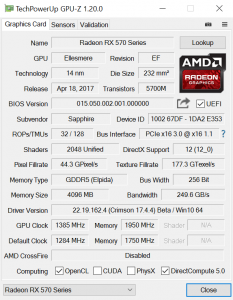
Unlike the RX 580 Nitro+ Limited Edition, the RX 570 Pulse has quite a small factory overclock, and I managed to push its clockspeed by exactly 101MHz, to 1385MHz. Any further than this resulted in artifacting in Fire Strike, but this is still an extra 8% frequency boost.
This overclock brought tangible benefits in Fire Strike, with the overclocked score rivalling that of the RX 580 Pulse card. This is a 9% score increase.
Incidentally, I also pushed the memory to 1950MHz, an increase of 200MHz, but I could not get it to 2000MHz due to instability issues.The Sapphire RX 570 Pulse 4GB is undoubtedly a compelling option in the sub-£200 market segment.
For one, it is priced very well at £179.99. This is more in-line with previous-generation RX 470 cards, and it would seem that the RX 570 cards have not undergone as much ‘price gouging' as the RX 580 cards. Even then, this Pulse card is still a fair bit cheaper than other RX 570 variants currently available at Overclockers UK, so if you are looking for a bang-for-the-buck option, this card is definitely worth thinking about.
This is particularly true considering the ASUS Strix RX 570, which we benchmarked alongside Pulse RX 570, costs £30 more but yields the most minimal of performance increases. In most games, these two cards were neck-and-neck, so buying the Pulse card saves you that £30 and you only lose out on a fraction of a FPS.
Elsewhere, Pulse RX 570 is also a cool and quiet card that draws significantly less power than the Strix model. It also proved a decent overclocker, as I saw a 9% increase in the Fire Strike score by adding +101MHz to the GPU core and +200MHz to the memory.
I do have to question the backplate design though, as it it uses a 4-way colour scheme that could well clash with your own system's colour scheme. A more colour-neutral backplate would help deliver universal appeal.
The last point to consider is who this card is targeting, as those with fan-favourites like the GTX 970 and R9 390 will see little reason to plump for a RX 570 in the first place. Those with older, Kepler or Pitcairn/Tahiti-based cards may well see more reason to upgrade, though.
All-in-all, the Sapphire RX 570 Pulse 4GB is an excellent RX 570 solution. While its backplate may not suit everyone, and there are still valid questions about why we even have the RX 500-series, this is still a very good graphics card – delivering good performance, quiet acoustics and low temperatures. It would seem Sapphire's decision to create a new product family with less features, but less of a cost, has been vindicated.
You can buy one for £179.99 from Overclockers UK HERE.
Discuss on our Facebook page, over HERE.
Pros
- Very well priced compared to the competition.
- Delivers solid performance.
- Cool and quiet.
- A backplate is good inclusion at this price.
- Decent overclocker.
Cons
- Backplate colour scheme could be off-putting to some.
- Other cards do deliver fastest speeds out-of-the-box.
KitGuru says: If you are looking for a simple yet effective RX 570 card, the Sapphire Pulse edition comes well recommended. It is cool, quiet and overclocks well.
 KitGuru KitGuru.net – Tech News | Hardware News | Hardware Reviews | IOS | Mobile | Gaming | Graphics Cards
KitGuru KitGuru.net – Tech News | Hardware News | Hardware Reviews | IOS | Mobile | Gaming | Graphics Cards


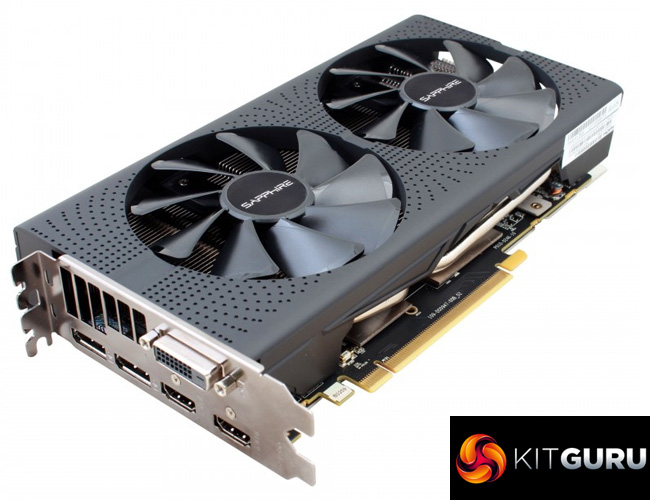
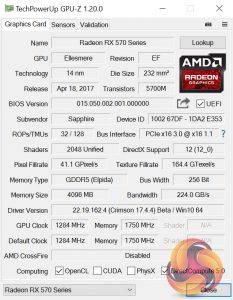
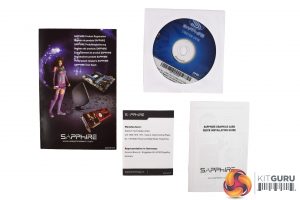
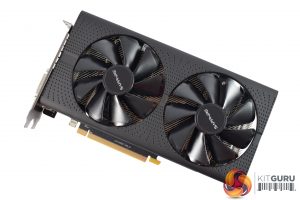
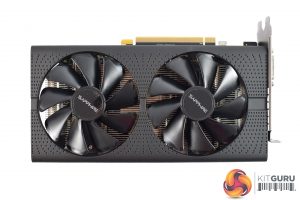
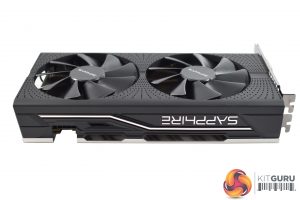
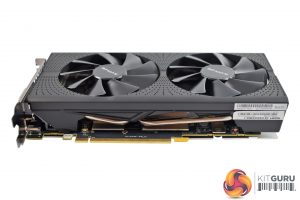
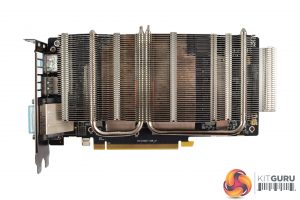
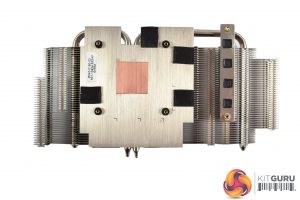
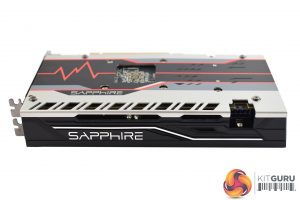
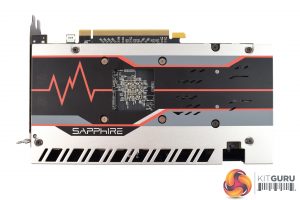
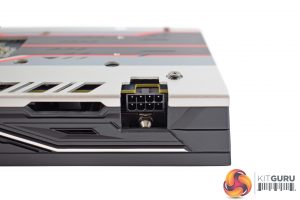
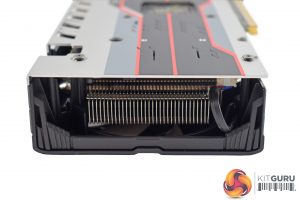
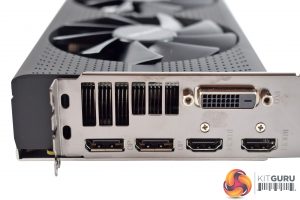
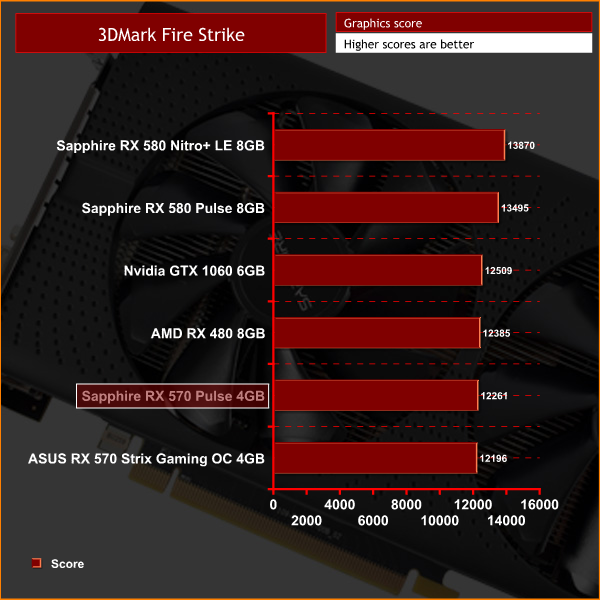
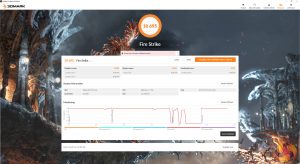
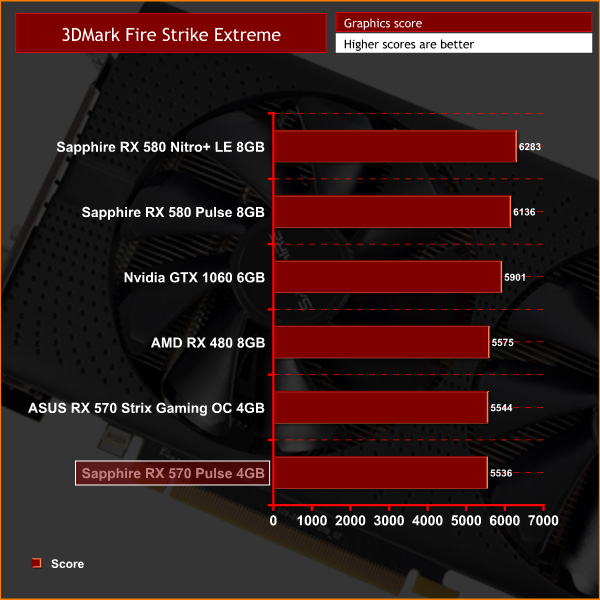
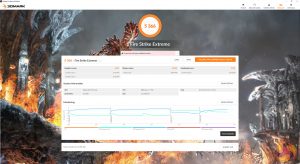
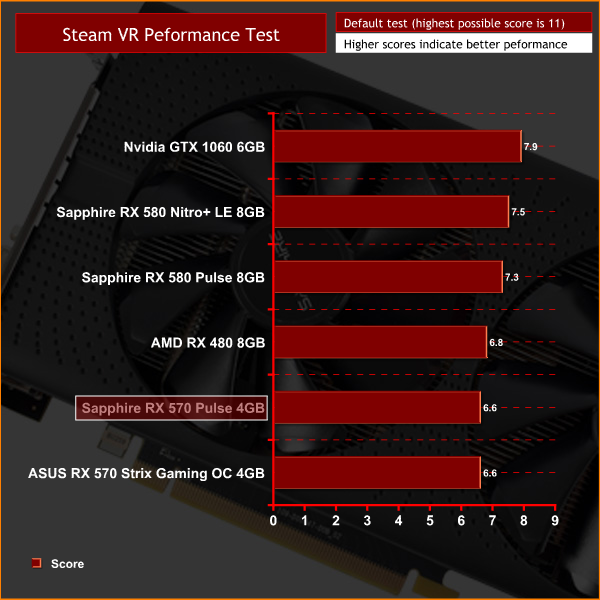
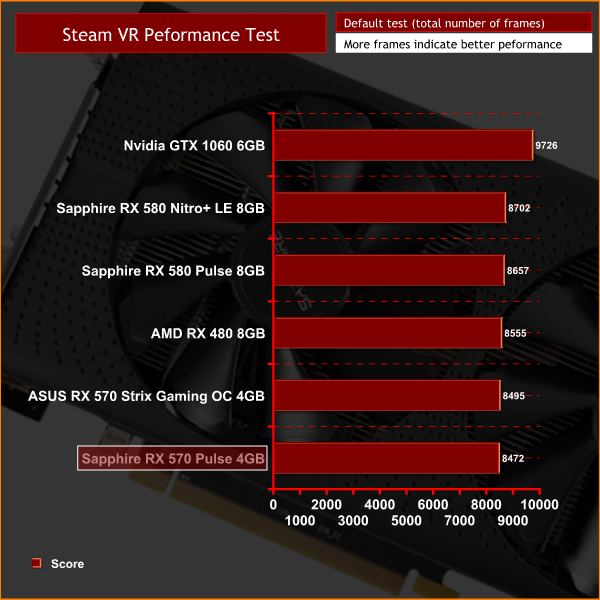
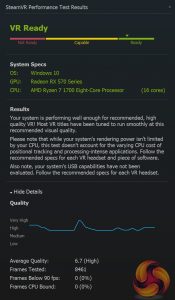
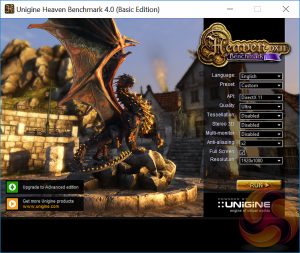
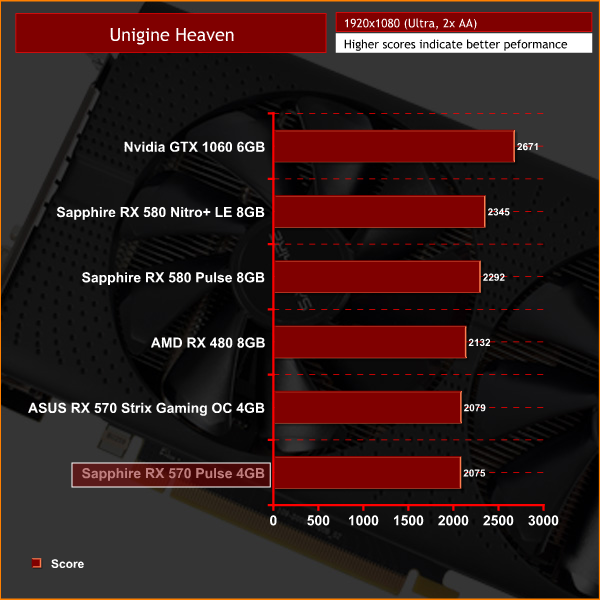
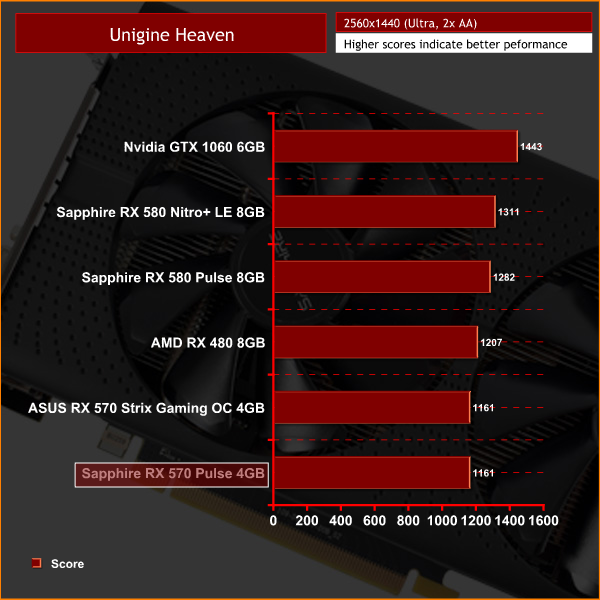
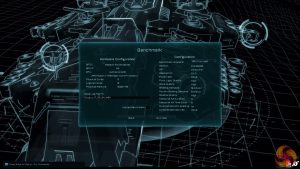
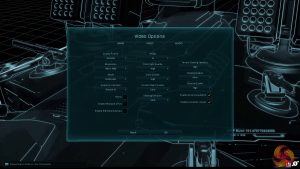
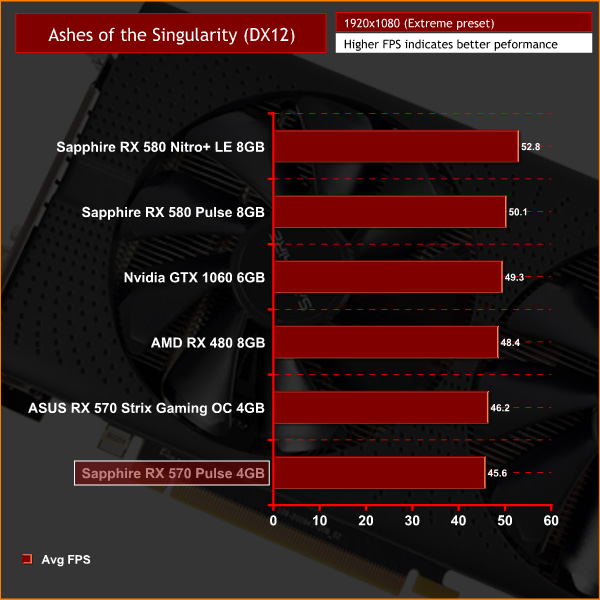
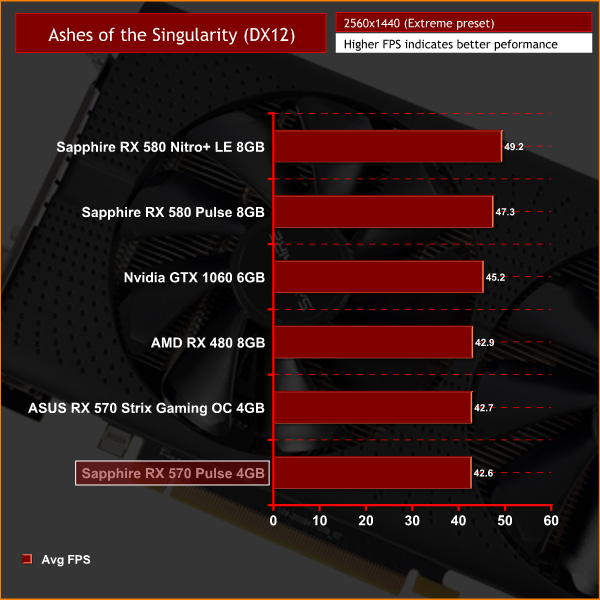
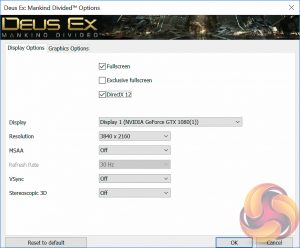
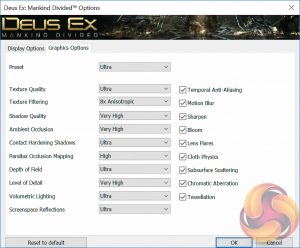
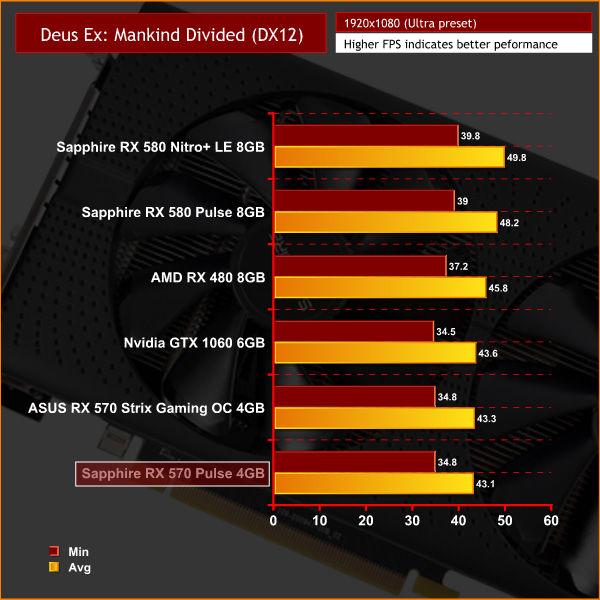
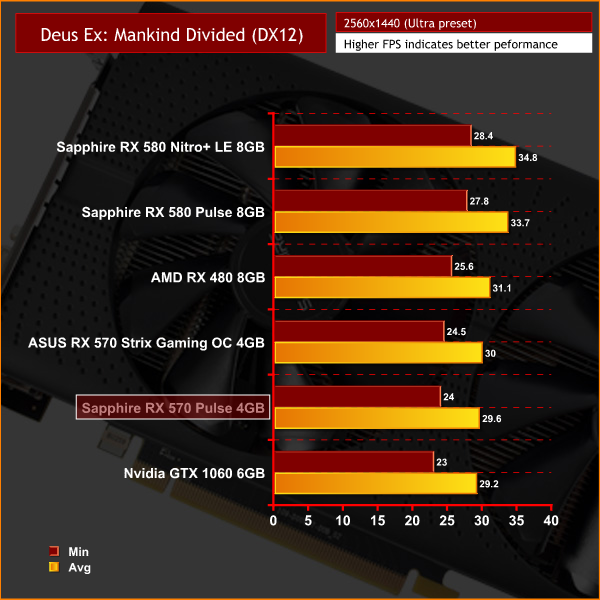
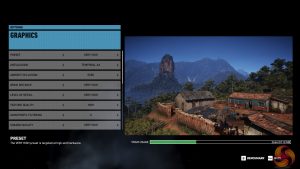
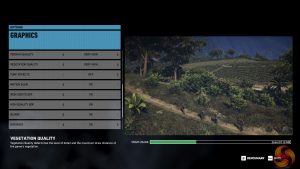
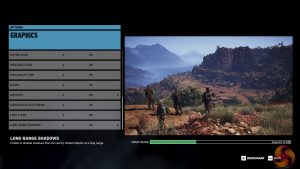
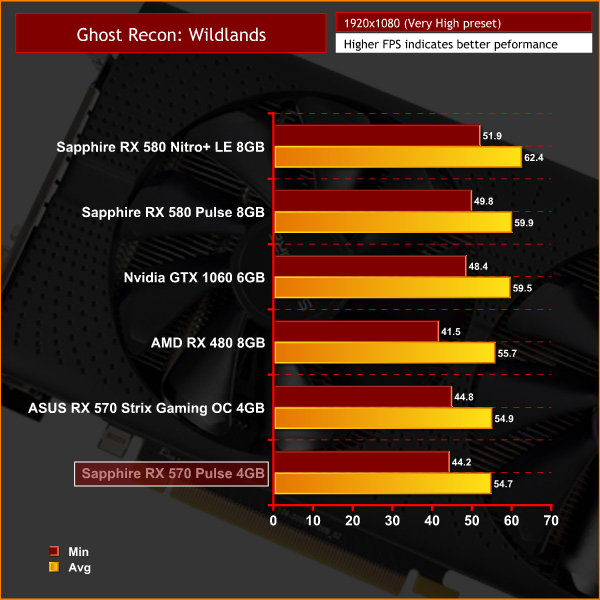
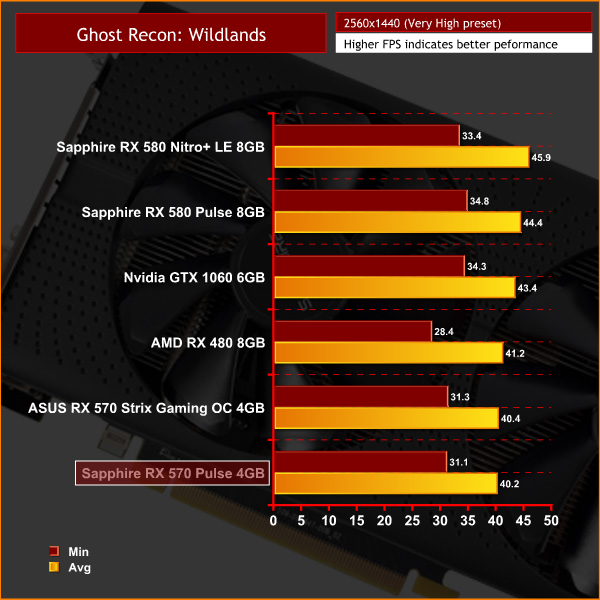
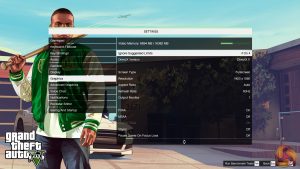
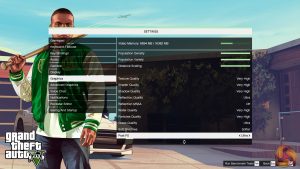
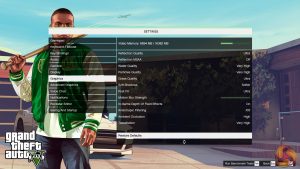
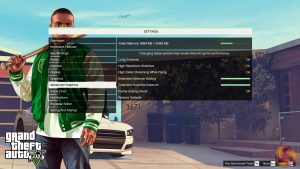
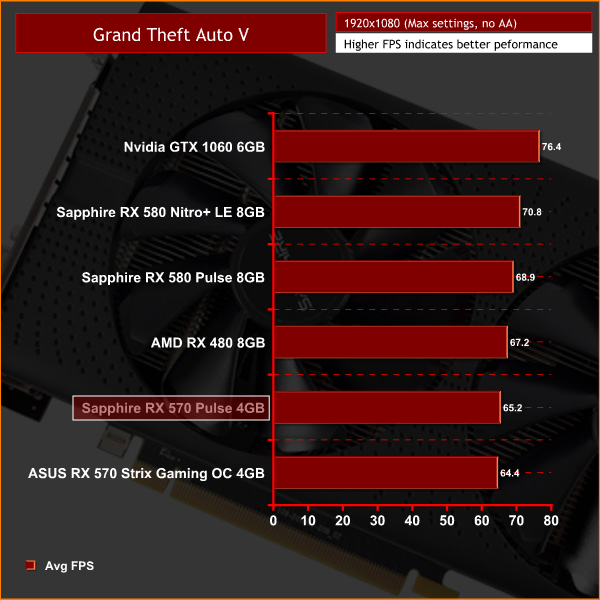
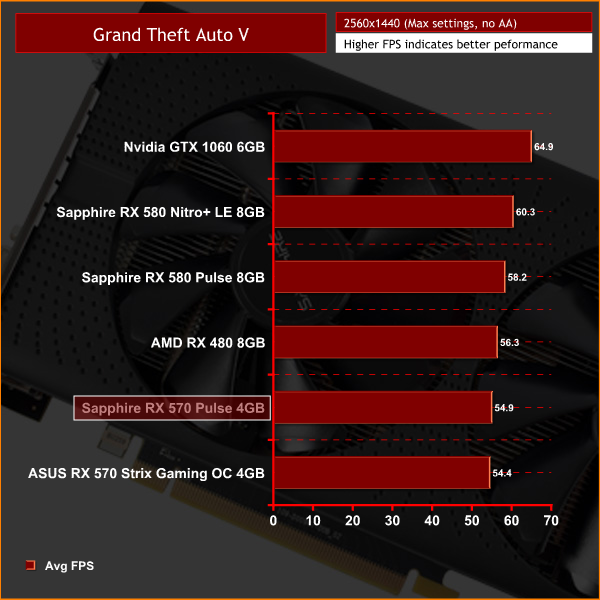
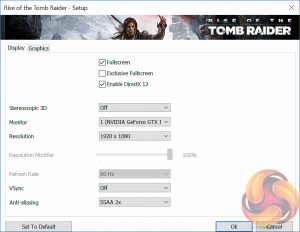
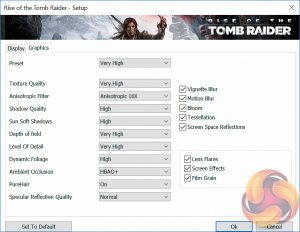
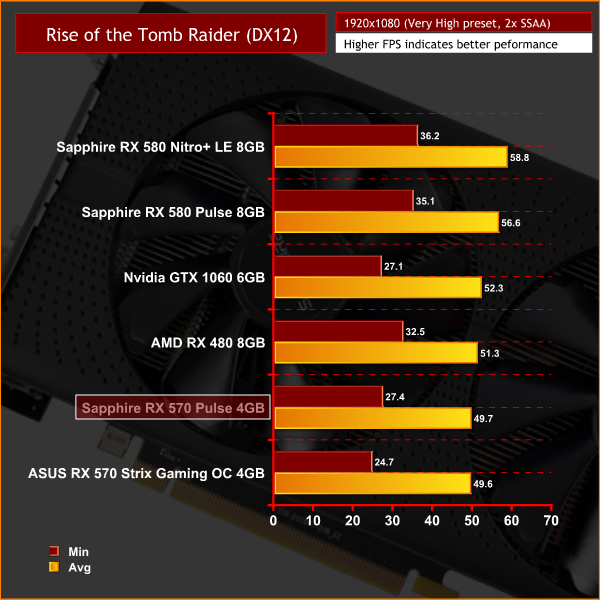
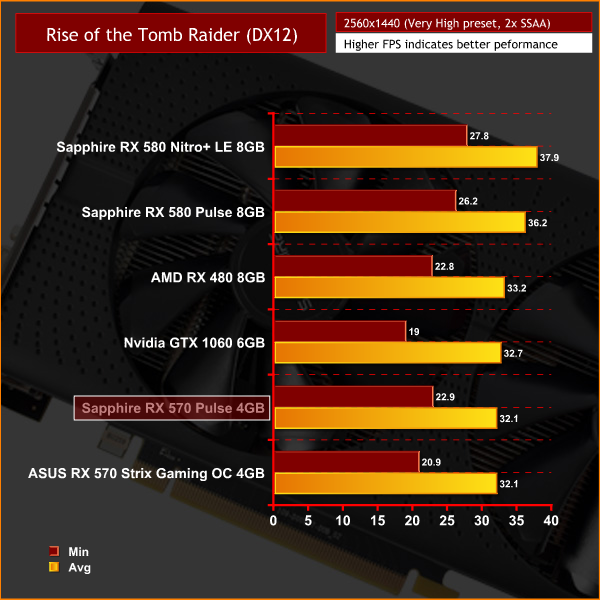
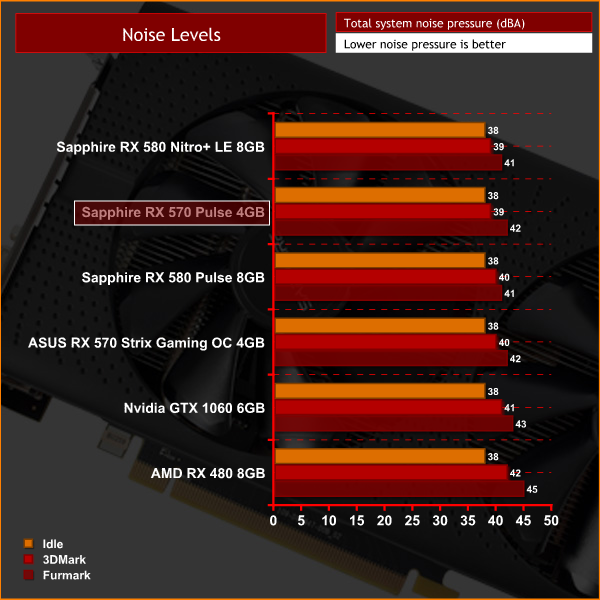
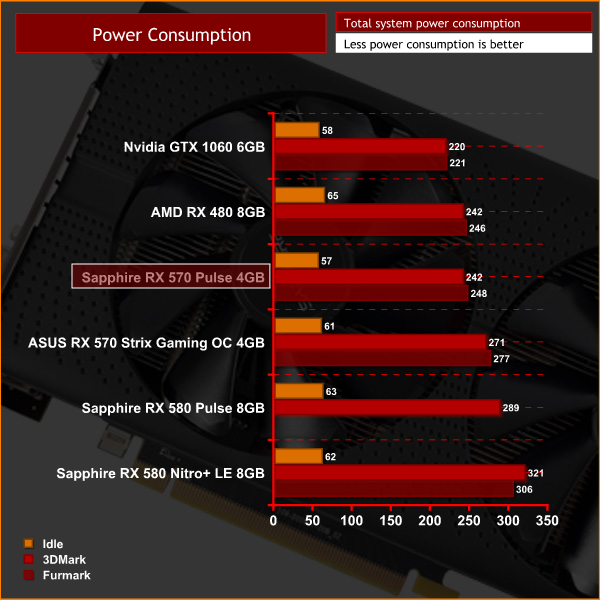

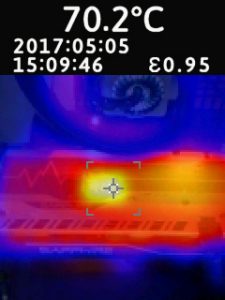
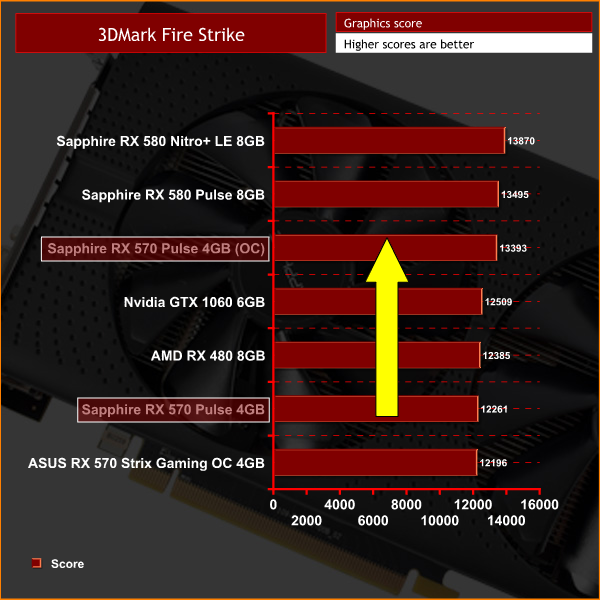
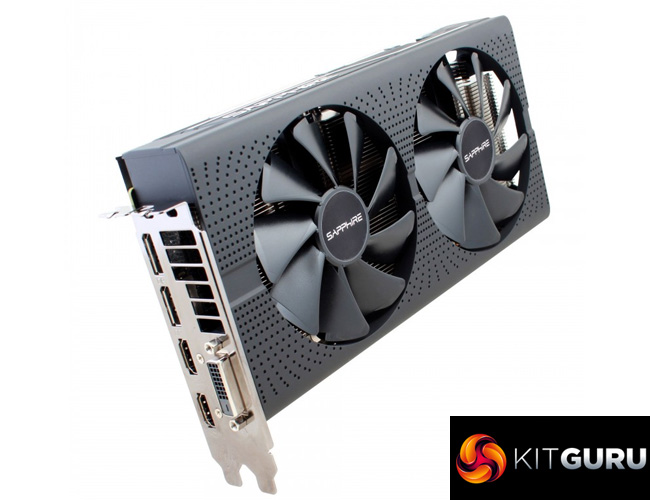


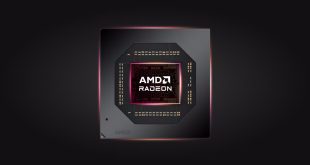
Excellent review; and it would be nice to see you you could label the release year of the games you use for benchmarking, as point of reference as well.